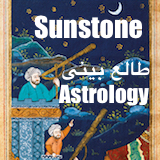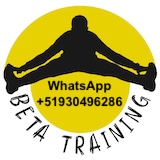By Charlotte Druckman
The Washington Post
This one’s kind of obvious, right? Of course, Samin Nosrat’s “Salt, Fat, Acid, Heat” is on this list. She’s Samin Nosrat. A household name with her own Netflix show and an undeniable screen presence characterized by boisterous enthusiasm and an explosive laugh. But before she was Samin Nosrat, international sensation, she was Samin, the Iranian American daughter of immigrants, who had worked at restaurants such as Chez Panisse in Berkeley, Calif., and studied journalism with author and activist Michael Pollan.
I will never forget the first time I met that Samin. It was in 2013, at the Southern Foodways Alliance Symposium in Oxford, Miss. As the attendees wended our way to lunch the first day, someone came up behind me, embraced me in a fierce hug and lifted me off the ground, shouting my name. It scared the bejeezus out of me. Once my feet were back on the sidewalk, I turned around and there she was, grinning. “Oh, I’m Samin,” she said, laughing that laugh of hers. She didn’t have to tell me. I knew as soon as I saw her. She was already a legend in the food world.
That was six-plus years ago, and she was knee-deep in achieving her goal.
Her plan was to create a core curriculum that could teach anyone how to make anything, and to do it by breaking her subject down into four elements: salt, fat, acid and heat. These, she had deduced, in the early aughts when she was a fledgling line cook, “guided basic decision-making in every single dish.” Over the next 10 years, she cooked professionally, traveled and researched to accrue as much culinary knowledge as a person can and to test her kitchen string theory. It held up.
She used this “tidy system of culinary thinking” to teach her own young line cooks when she became a chef de cuisine. Then she used it to teach Pollan — the guy who wrote “The Omnivore’s Dilemma” and told us all what to eat but didn’t know how to cook himself. And then she used it to teach friends, neighbors, middle-schoolers, senior citizens and culinary school students.
Finally, she spent three years putting it on the page for the rest of us. All told, this undeniably breakthrough achievement was 18 years in the making.
I could say it’s the only book you need to learn how to cook; I could also say it’s the book that ties the other nine in this series together and makes sense of them as a whole. Nosrat explains The Why of cooking without seeming intimidatingly science-y or clinical. While accomplishing that herculean task, she also shows us how universal The Why is — how much food prepared around the world has in common. The specific techniques may differ, the ingredients, too, but the way flavors are combined and balanced, and heat applied, are strikingly alike, as if part of the human condition.
Knowing that, and knowing what those basic shared tenets are, makes it that much easier to imagine branching out in my own kitchen, and not just to try to cook food from other cultures, but to mix and match, to adapt recipes to my taste with confidence.
Nosrat hopes we’ll adapt her recipes, but I’m loathe to change them (and I live to go rogue on other peoples’ recipes). They’re infallible as written, just like the rest of this masterpiece.










Comments